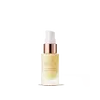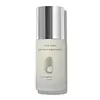What's inside
What's inside
 Key Ingredients
Key Ingredients

 Benefits
Benefits

 Concerns
Concerns

 Ingredients Side-by-side
Ingredients Side-by-side

Water
Skin ConditioningArgania Spinosa Kernel Oil
EmollientGlycerin
HumectantNiacinamide
SmoothingPolyglyceryl-10 Oleate
Skin ConditioningCaprylic/Capric Triglyceride
MaskingKojic Acid
AntioxidantCoconut Alkanes
EmollientCandelilla/Jojoba/Rice Bran Polyglyceryl-3 Esters
EmulsifyingPropanediol
SolventAnanas Sativus Fruit Extract
Skin ConditioningPterocarpus Marsupium Bark Extract
Lactobacillus Ferment
Skin ConditioningTocopherol
AntioxidantOctadecenedioic Acid
EmulsifyingCitric Acid
BufferingLactic Acid
BufferingPhosphatidylglycerol
Pentylene Glycol
Skin ConditioningSorbitan Stearate
EmulsifyingSodium Stearoyl Lactylate
EmulsifyingGlyceryl Undecylenate
EmollientCetearyl Alcohol
EmollientGlyceryl Stearate
EmollientCetyl Palmitate
EmollientCoco-Caprylate/Caprate
EmollientSaccharide Isomerate
HumectantXanthan Gum
EmulsifyingSorbitan Palmitate
EmulsifyingGlyceryl Caprylate
EmollientSorbitan Oleate
EmulsifyingSodium Hydroxide
BufferingSodium Citrate
BufferingSodium Carbonate
BufferingSodium Chloride
MaskingTetrasodium Glutamate Diacetate
Cellulose Gum
Emulsion StabilisingPhenethyl Alcohol
MaskingSodium Benzoate
MaskingWater, Argania Spinosa Kernel Oil, Glycerin, Niacinamide, Polyglyceryl-10 Oleate, Caprylic/Capric Triglyceride, Kojic Acid, Coconut Alkanes, Candelilla/Jojoba/Rice Bran Polyglyceryl-3 Esters, Propanediol, Ananas Sativus Fruit Extract, Pterocarpus Marsupium Bark Extract, Lactobacillus Ferment, Tocopherol, Octadecenedioic Acid, Citric Acid, Lactic Acid, Phosphatidylglycerol, Pentylene Glycol, Sorbitan Stearate, Sodium Stearoyl Lactylate, Glyceryl Undecylenate, Cetearyl Alcohol, Glyceryl Stearate, Cetyl Palmitate, Coco-Caprylate/Caprate, Saccharide Isomerate, Xanthan Gum, Sorbitan Palmitate, Glyceryl Caprylate, Sorbitan Oleate, Sodium Hydroxide, Sodium Citrate, Sodium Carbonate, Sodium Chloride, Tetrasodium Glutamate Diacetate, Cellulose Gum, Phenethyl Alcohol, Sodium Benzoate
Water
Skin ConditioningGlycerin
HumectantGluconolactone
Skin ConditioningSaccharomyces/Grape Ferment Extract
Skin ConditioningPropanediol
SolventCoco-Caprylate/Caprate
EmollientNiacinamide
SmoothingGlyceryl Stearate Citrate
EmollientGlyceryl Stearate
EmollientHelianthus Annuus Seed Oil
EmollientSodium Levulinate
Skin ConditioningSodium Hydroxide
BufferingCetearyl Alcohol
EmollientCitric Acid
BufferingMandelic Acid
AntimicrobialPhospholipids
Skin ConditioningXanthan Gum
EmulsifyingSclerotium Gum
Emulsion StabilisingSodium Anisate
AntimicrobialParfum
MaskingPentylene Glycol
Skin ConditioningLeuconostoc/Radish Root Ferment Filtrate
AntimicrobialSodium Hyaluronate
HumectantPlankton Extract
Skin ConditioningSucrose
HumectantLecithin
EmollientTocopherol
AntioxidantLinalool
PerfumingLimonene
PerfumingCitral
PerfumingGeraniol
PerfumingWater, Glycerin, Gluconolactone, Saccharomyces/Grape Ferment Extract, Propanediol, Coco-Caprylate/Caprate, Niacinamide, Glyceryl Stearate Citrate, Glyceryl Stearate, Helianthus Annuus Seed Oil, Sodium Levulinate, Sodium Hydroxide, Cetearyl Alcohol, Citric Acid, Mandelic Acid, Phospholipids, Xanthan Gum, Sclerotium Gum, Sodium Anisate, Parfum, Pentylene Glycol, Leuconostoc/Radish Root Ferment Filtrate, Sodium Hyaluronate, Plankton Extract, Sucrose, Lecithin, Tocopherol, Linalool, Limonene, Citral, Geraniol
Ingredients Explained
These ingredients are found in both products.
Ingredients higher up in an ingredient list are typically present in a larger amount.
Cetearyl alcohol is a mixture of two fatty alcohols: cetyl alcohol and stearyl alcohol. It is mainly used as an emulsifier. Emulsifiers help prevent the separation of oils and products. Due to its composition, it can also be used to thicken a product or help create foam.
Cetearyl alcohol is an emollient. Emollients help soothe and hydrate the skin by trapping moisture.
Studies show Cetearyl alcohol is non-toxic and non-irritating. The FDA allows products labeled "alcohol-free" to have fatty alcohols.
This ingredient is usually derived from plant oils such as palm, vegetable, or coconut oils. There is debate on whether this ingredient will cause acne.
Due to the fatty acid base, this ingredient may not be Malassezia folliculitis safe.
Learn more about Cetearyl AlcoholCitric Acid is an alpha hydroxy acid (AHA) naturally found in citrus fruits like oranges, lemons, and limes.
Like other AHAs, citric acid can exfoliate skin by breaking down the bonds that hold dead skin cells together. This helps reveal smoother and brighter skin underneath.
However, this exfoliating effect only happens at high concentrations (20%) which can be hard to find in cosmetic products.
Due to this, citric acid is usually included in small amounts as a pH adjuster. This helps keep products slightly more acidic and compatible with skin's natural pH.
In skincare formulas, citric acid can:
While it can provide some skin benefits, research shows lactic acid and glycolic acid are generally more effective and less irritating exfoliants.
Most citric acid used in skincare today is made by fermenting sugars (usually from molasses). This synthetic version is identical to the natural citrus form but easier to stabilize and use in formulations.
Read more about some other popular AHA's here:
Learn more about Citric AcidCoco-Caprylate/Caprate is created from fatty coconut alcohol, caprylic acid, and capric acid.
It is a lightweight emollient. Emollients create a thin barrier on the skin to trap moisture in. This helps keep your skin hydrated and soft.
Once applied, Coco-Caprylate/Caprate is absorbed quickly and leaves a silky feel.
Coco-Caprylate/Caprate may not be fungal acne safe.
Learn more about Coco-Caprylate/CaprateGlycerin is already naturally found in your skin. It helps moisturize and protect your skin.
A study from 2016 found glycerin to be more effective as a humectant than AHAs and hyaluronic acid.
As a humectant, it helps the skin stay hydrated by pulling moisture to your skin. The low molecular weight of glycerin allows it to pull moisture into the deeper layers of your skin.
Hydrated skin improves your skin barrier; Your skin barrier helps protect against irritants and bacteria.
Glycerin has also been found to have antimicrobial and antiviral properties. Due to these properties, glycerin is often used in wound and burn treatments.
In cosmetics, glycerin is usually derived from plants such as soybean or palm. However, it can also be sourced from animals, such as tallow or animal fat.
This ingredient is organic, colorless, odorless, and non-toxic.
Glycerin is the name for this ingredient in American English. British English uses Glycerol/Glycerine.
Learn more about GlycerinGlyceryl Stearate is a mix of glycerin and stearic acid.
It is used to stabilize the mixing of water and oil ingredients. By preventing these ingredients from separating, it can help elongate shelf life. It can also help thicken the product's texture.
As an emollient, it helps soften skin and supports barrier-replenishing ingredients.
In cosmetics, Glyceryl Stearate is often made from vegetable oils or synthetically produced.
This ingredient may not be fungal-acne safe
Fun fact: The human body also creates Glyceryl Stearate naturally.
Learn more about Glyceryl StearateNiacinamide is a multitasking form of vitamin B3 that strengthens the skin barrier, reduces pores and dark spots, regulates oil, and improves signs of aging.
And the best part? It's gentle and well-tolerated by most skin types, including sensitive and reactive skin.
You might have heard of "niacin flush", or the reddening of skin that causes itchiness. Niacinamide has not been found to cause this.
In very rare cases, some individuals may not be able to tolerate niacinamide at all or experience an allergic reaction to it.
If you are experiencing flaking, irritation, and dryness with this ingredient, be sure to double check all your products as this ingredient can be found in all categories of skincare.
When incorporating niacinamide into your routine, look out for concentration amounts. Typically, 5% niacinamide provides benefits such as fading dark spots. However, if you have sensitive skin, it is better to begin with a smaller concentration.
When you apply niacinamide to your skin, your body converts it into nicotinamide adenine dinucleotide (NAD). NAD is an essential coenzyme that is already found in your cells as "fuel" and powers countless biological processes.
In your skin, NAD helps repair cell damage, produce new healthy cells, support collagen production, strengthen the skin barrier, and fight environmental stressors (like UV and pollution).
Our natural NAD levels start to decline with age, leading to slower skin repair, visible aging, and a weaker skin barrier. By providing your skin niacinamide, you're recharging your skin's NAD levels. This leads to stronger, healthier, and younger looking skin.
Another name for vitamin B3 is nicotinamide. This vitamin is water-soluble and our bodies don't store it. We obtain Vitamin B3 from either food or skincare. Meat, fish, wheat, yeast, and leafy greens contain vitamin B3.
The type of niacinamide used in skincare is synthetically created.
Learn more about NiacinamidePentylene glycol is typically used within a product to thicken it. It also adds a smooth, soft, and moisturizing feel to the product. It is naturally found in plants such as sugar beets.
The hydrophilic trait of Pentylene Glycol makes it a humectant. As a humectant, Pentylene Glycol helps draw moisture from the air to your skin. This can help keep your skin hydrated.
This property also makes Pentylene Glycol a great texture enhancer. It can also help thicken or stabilize a product.
Pentylene Glycol also acts as a mild preservative and helps to keep a product microbe-free.
Some people may experience mild eye and skin irritation from Pentylene Glycol. We always recommend speaking with a professional about using this ingredient in your routine.
Pentylene Glycol has a low molecular weight and is part of the 1,2-glycol family.
Learn more about Pentylene GlycolPropanediol is an all-star ingredient. It softens, hydrates, and smooths the skin.
It’s often used to:
Propanediol is not likely to cause sensitivity and considered safe to use. It is derived from corn or petroleum with a clear color and no scent.
Learn more about PropanediolSodium Hydroxide is also known as lye or caustic soda. It is used to adjust the pH of products; many ingredients require a specific pH to be effective.
In small amounts, sodium hydroxide is considered safe to use. However, large amounts may cause chemical burns due to its high alkaline.
Your skin has a natural pH and acid mantle. This acid mantle helps prevent harmful bacteria from breaking through. The acid mantle also helps keep your skin hydrated.
"Alkaline" refers to a high pH level. A low pH level would be considered acidic.
Learn more about Sodium HydroxideTocopherol (also known as Vitamin E) is a common antioxidant used to help protect the skin from free-radicals and strengthen the skin barrier. It's also fat soluble - this means our skin is great at absorbing it.
Vitamin E also helps keep your natural skin lipids healthy. Your lipid skin barrier naturally consists of lipids, ceramides, and fatty acids. Vitamin E offers extra protection for your skin’s lipid barrier, keeping your skin healthy and nourished.
Another benefit is a bit of UV protection. Vitamin E helps reduce the damage caused by UVB rays. (It should not replace your sunscreen). Combining it with Vitamin C can decrease sunburned cells and hyperpigmentation after UV exposure.
You might have noticed Vitamin E + C often paired together. This is because it is great at stabilizing Vitamin C. Using the two together helps increase the effectiveness of both ingredients.
There are often claims that Vitamin E can reduce/prevent scarring, but these claims haven't been confirmed by scientific research.
Learn more about TocopherolWater. It's the most common cosmetic ingredient of all. You'll usually see it at the top of ingredient lists, meaning that it makes up the largest part of the product.
So why is it so popular? Water most often acts as a solvent - this means that it helps dissolve other ingredients into the formulation.
You'll also recognize water as that liquid we all need to stay alive. If you see this, drink a glass of water. Stay hydrated!
Learn more about WaterXanthan gum is used as a stabilizer and thickener within cosmetic products. It helps give products a sticky, thick feeling - preventing them from being too runny.
On the technical side of things, xanthan gum is a polysaccharide - a combination consisting of multiple sugar molecules bonded together.
Xanthan gum is a pretty common and great ingredient. It is a natural, non-toxic, non-irritating ingredient that is also commonly used in food products.
Learn more about Xanthan Gum